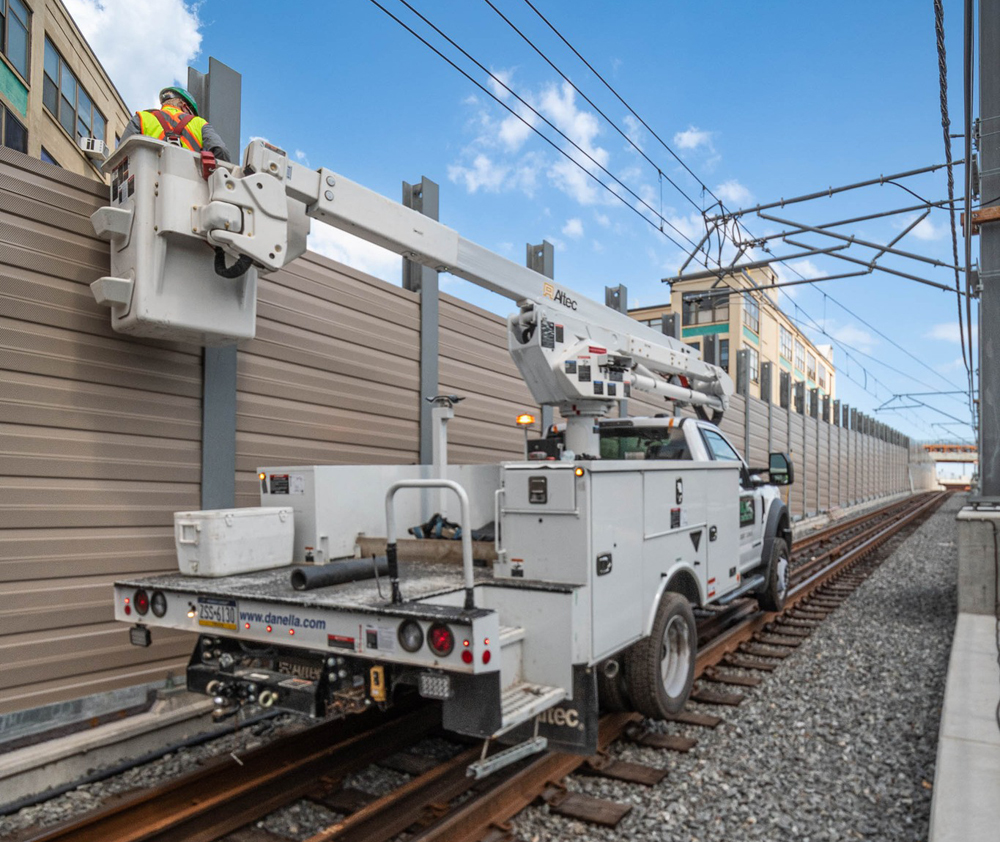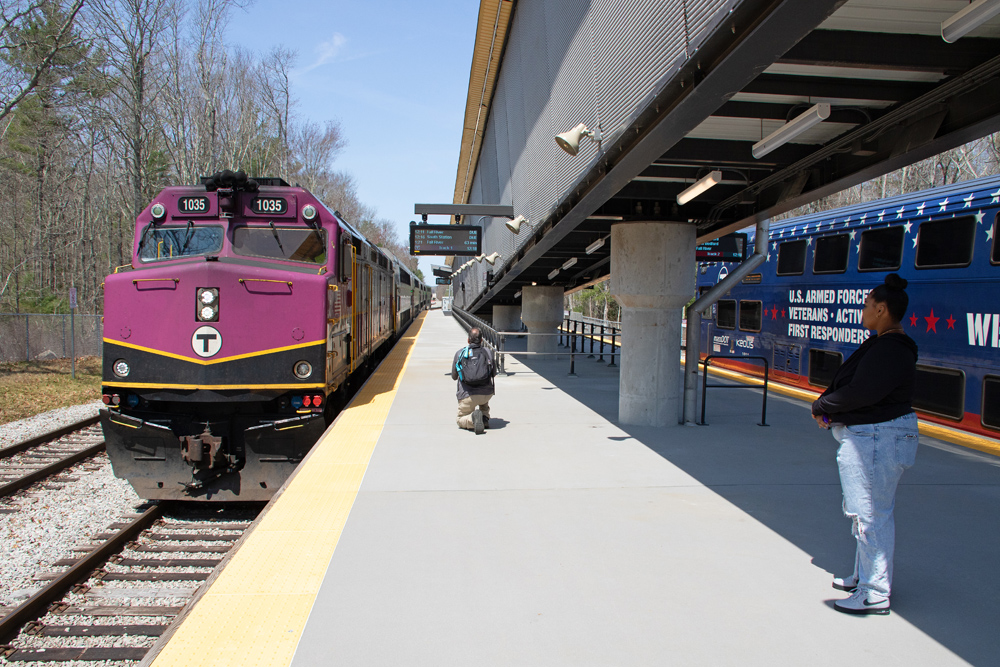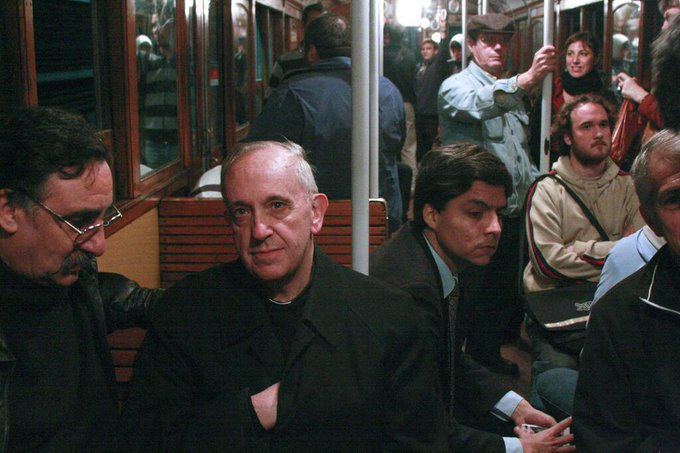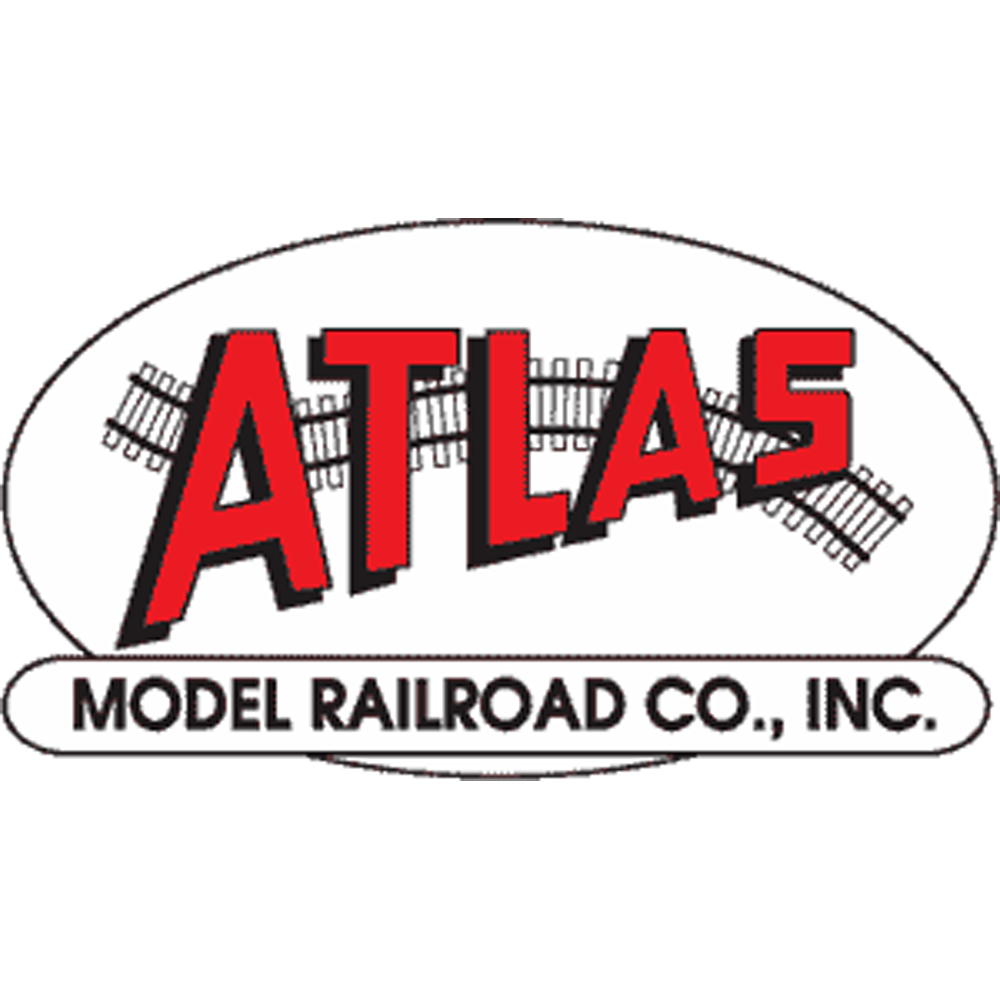
BOSTON — The contractor responsible for out-of-gauge construction on the Massachusetts Bay Transportation Authority’s Green Line extension is proposing a series of overnight shutdowns to rectify the problem, WBZ-TV reports.
MBTA CEO Phillip Eng told a meeting of the agency’s advisory board that the contractor is proposing a shutdown of the 4.7-mile extension from 9 p.m. to 5 a.m. for 10 to 14 days to repair the problem. Shuttle buses would replace rail service during the evening hours. The extension normally starts operating about 4:45 a.m. and shuts down 12:25 a.m. The proposed start date for the work is Nov. 1.
Eng told the advisory board that would be enough time for repairs: “It’s not months, it’s not years to do this.”
Eng said at a press conference last week that more than half of the extension was built with rails too closely together, apparently because of improperly positioned tie plates. The problem was noted as early as April 2021 but was not addressed before the extension opened last December [see “MBTA Green Line eztension was built with track out of gauge …,” Trains News Wire, Oct. 19, 2023].














Thanks Thomas, I always thought that guardrails were only for bridges, but your tight clearance explanation makes a lot of sense. A lot of the NYC subway clearances seem very tight when I used to look out the front windows.
From the previous same day South Shore article forum, I’m now open to the thought that the extra rails are a gauntlet track arrangement???
I think I see tie plates under the MW truck in the photo above.
I guess that the contractor could have used a life-size NMRA track gauge. What is the actual width – 4 feet 6 1/2 inches? The Inner rail edges must be right at the wheel flange, creating some excessive wear on both wheels and rail.
Another thing, a while ago, I posted a link from Dave’s Rail Pics of ~120 pics of the old Atlantic City (NJ) Transit, trolley car (light rail) system, originally built to certain PRR engineering standards long ago, and was scrapped and abandoned at the end of 1955. In at least one of those pics, that photo showed where ACT’s private RoW was off the city streets without pavement, and clearly showed that the rails were spiked to the wood ties without the use of tie-plates. I guess that doesn’t apply anymore, safety-wise, especially where taxpayers’ money is used???
The more I think about it, I suppose there are much surplus tie plates available dirt cheap today with the advent of the newer concrete ties technology that I witnessed in UPRR’s double track project. There were piles of wood tie plates everywhere.
I hope this time, they can see well in the night time darkness, sarc. And I’m curious, what are those two inner rails for, as seen in the above article pic???
Those are guardrails. You might also find them on bridges.
If there is a derailment or a broken wheel or axle, guardrails keep the defective car in line with the track. This can be helpful when side clearance is minimal.